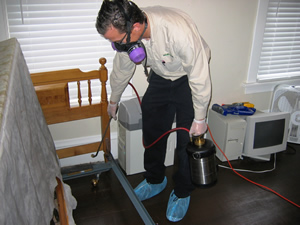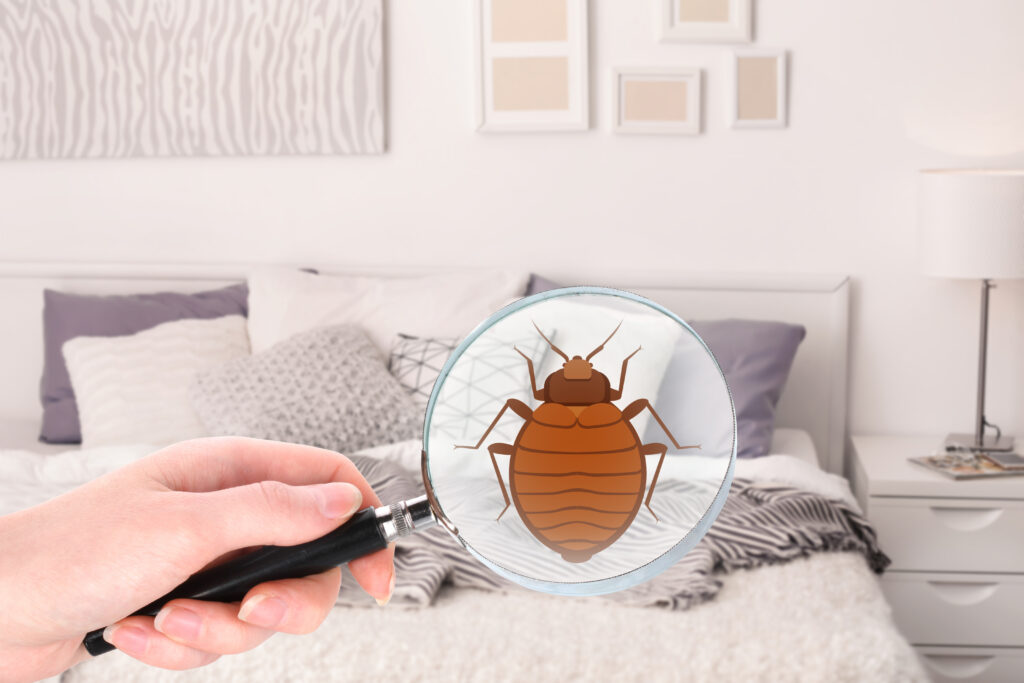Effective Bed Bug Exterminator: DC Services with Heat Treatment
Effective Bed Bug Exterminator: DC Services with Heat Treatment
Blog Article
Discovering the Science Behind Bed Pest Heat Treatments as a Sustainable Parasite Administration Strategy
One such method that has actually acquired traction in current years is the use of warmth therapies to combat bed insect invasions. The complexities of how warm efficiently eliminates bed bugs and the broader implications for sustainable bug management techniques make this a subject worth checking out even more.
Bed Insect Heat Treatment Refine

Thermal Death Factor for Bed Bugs
Revealing bed bugs to raised temperatures past their thermal tolerance array is important for attaining efficient obliteration in heat therapy processes. The thermal fatality point for bed insects describes the temperature at which these bugs can not endure. Research study indicates that bed pests start to perish when revealed to temperatures above 113 ° F(45 ° C) for a continual duration. As the temperature raises, so does the mortality price of bed bugs. At around 118 ° F(48 ° C ), bed bugs begin to pass away swiftly, with a death rate of almost 99% within mins of direct exposure. This demonstrates the sensitivity of bed insects to high temperature levels and highlights the effectiveness of heat treatments in getting rid of infestations. By reaching and maintaining temperatures over the thermal fatality point for bed pests, parasite management professionals can make sure thorough removal of bed pest populations, consisting of hard-to-reach locations where chemical therapies might be much less reliable. Understanding the thermal death point for bed pests is important for executing effective heat treatment strategies and accomplishing sustainable bug monitoring end results.
Benefits of Heat Treatments
Having actually developed the vital thermal fatality point for bed pests, it is imperative to currently explore the significant benefits that warm treatments provide in properly eradicating these durable parasites. Warmth treatments present numerous vital advantages when compared to standard chemical approaches. One of here the main advantages is that warm can permeate deep into crevices and cracks where bed pests hide, making certain that also one of the most hard-to-reach locations are warmed to dangerous temperatures. This extensive approach not only eliminates real-time bugs but additionally targets bed bug eggs, preventing future problems.
In addition, heat therapies are non-toxic and eco-friendly, making them a sustainable bug monitoring strategy. Unlike chemical pesticides, warmth treatments do not leave unsafe residues that can present risks to human health or the atmosphere. This element is especially crucial in delicate environments such as medical facilities, colleges, and domestic areas where chemical usage might not be preferable.
In addition, heat therapies have a high success rate in eliminating bed bug problems in a solitary therapy, decreasing the need for numerous brows through and decreasing disruption to occupants. This performance not just conserves time and reference money however likewise gives comfort to those dealing with bed insect problems.
Effectiveness of Warmth Treatment

Study research studies have actually consistently demonstrated the effectiveness of warmth therapies in accomplishing a high rate of bed pest mortality. Properly carried out warm therapies can reach all the holes and cracks where bed insects might be nurturing, making certain a comprehensive approach to extermination. Additionally, heat treatments have the included benefit of killing bed pest eggs, which are commonly resistant to typical chemical treatments. Overall, the performance of warm therapies in removing bed insect invasions makes them a trustworthy and sustainable insect administration method.
Sustainable Pest Monitoring Conveniences
Implementing sustainable parasite monitoring practices offers long-lasting advantages for both the environment and public health. By using approaches such as warm therapies for pest control, we can minimize the reliance on dangerous chemical pesticides that can have unfavorable results on ecological communities and human health and wellness - exterminator. Sustainable bug monitoring approaches aid in protecting biodiversity by targeting details pests without damaging non-target microorganisms, thus preserving a well balanced environment
Furthermore, sustainable insect monitoring practices add to the overall health and well-being of the public. By minimizing exposure to harmful chemicals used in conventional pest control approaches, warm treatments provide a safer choice for parasite monitoring in domestic, industrial, and public spaces. This decrease in chemical use additionally helps in preventing pesticide deposits from contaminating soil, water, and air, guarding ecological top quality.
Conclusion
Finally, bed bug warmth therapies have been shown to be a sustainable and effective parasite administration technique. The thermal death factor for bed pests makes them susceptible to warmth treatments, which have various benefits over traditional chemical therapies. The effectiveness of warmth therapies in eliminating bed insect infestations while reducing ecological influence highlights the potential of this method as a sustainable remedy for parasite control.
The bed insect warm treatment procedure involves elevating the temperature within infested areas to a level that successfully gets rid of bed bugs and their eggs. By reaching and maintaining temperatures over the thermal death point for bed insects, parasite management experts can guarantee thorough elimination of bed pest populaces, consisting of hard-to-reach areas where chemical treatments might be much less efficient. One of the main advantages is that warm can pass through deep into holes and splits where bed bugs conceal, making sure that also the most hard-to-reach locations are heated to deadly temperature levels. Unlike chemical treatments that might leave behind resistant populations, heat therapies offer a ecologically friendly and non-toxic option that can pass through deep right into furnishings, wall surfaces, and various other hard-to-reach locations where bed insects conceal.
The thermal fatality point for bed bugs makes them susceptible to warmth treatments, which have various advantages over typical chemical therapies.
Report this page